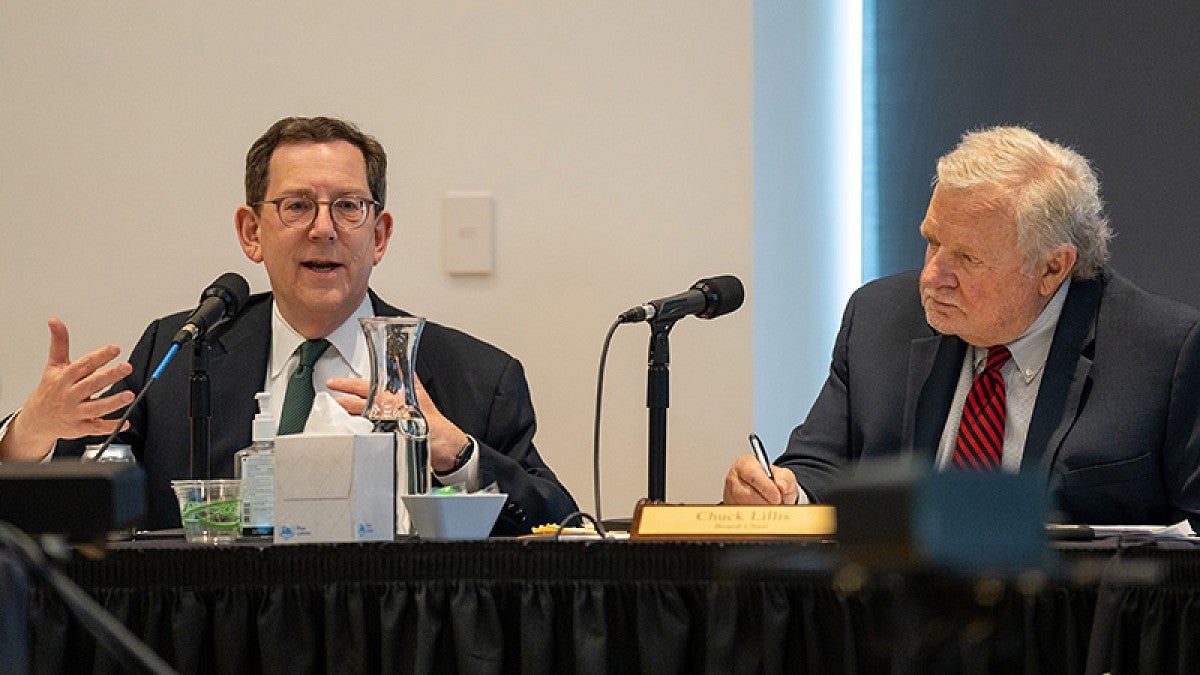The University of Oregon’s 2021-26 University Priorities document, presented to the UO Board of Trustees at its May meeting by President Michael H. Schill, updates and extends the university’s strategic framework, a set of goals and aspirations adopted in 2016 in support of the UO's mission, vision and values.
“While the university has achieved many of the priorities identified in the initial strategic framework,” Schill said, “the vision of excellence in research and teaching, student success and experience, inclusion and diversity, and service to society is as relevant now as when it was first adopted.”
Schill told trustees that the priorities identified cross-academic disciplines, units, programs, and schools and colleges. The process of establishing the universitywide priorities took shape over several years, with input from the school and college deans, the vice presidents, University Senate leadership, hundreds of faculty members, working groups, and other administrative and academic leaders.
“These are the areas that the provost and I will focus on over the next five years,” Schill said. “They are not exhaustive but will help to prioritize our efforts. They are areas of impact and strength, in which we can make a difference for our students, state and society.”
The priorities fall into several primary areas:
- Academics and research.
- Student success and experience.
- UO Portland.
- Diversity, equity and inclusion.
- School, college and unit-established priorities.
Schill said the academic and research priorities stem from established initiatives identified by the provost and faculty members over the last several years.
They include the environment, data science, faculty diversity, bioengineering and applied science, sport and wellness, innovation and entrepreneurship, children’s behavioral health, and global studies and languages.
Schill said Provost and Senior Vice President Patrick Phillips will continue to work with faculty members to develop each of the multidisciplinary priority areas, rolling plans out over time.
“We will be coming forward next year with more strategic implementation plans about how we will be successful in these academic and research spaces, and they will elevate the institution as a whole,” Phillips said.
The student success and experience priorities are focused on enhancing scholarships and financial aid through PathwayOregon, diversity scholarships and basic needs support. Schill said the university also will continue to focus on improving timely graduation by increasing the four-year graduation rate and reducing achievement disparities among students.
Student success efforts also will focus on career readiness through career services, high-impact experiences and pipeline programs to enhance economic and racial diversity at the university.
Related to UO Portland, the president said in the short term, the university will focus on ensuring safety at the White Stag Block and completing the purchase of the campus in the Concordia neighborhood of Portland. Then the focus will continue on launching The Ballmer Institute for Children’s Behavioral Health, moving UO Portland programs to the new campus, establishing other opportunities, and further enhancing programs to attract students of underrepresented groups.
Schill called on the deans and vice presidents in the schools, colleges and units to establish their own priorities. Phillips explained that those priorities will be supported through seed funding, the Institutional Hiring Plan and unit-level fundraising.
Finally, Schill said that diversity, equity and inclusion are critical to all priorities. He said over the next five years, following the recent climate survey, the university will focus on reviewing and taking action on diverse hiring and retention, and enhancing a sense of belonging at the university.
“We’re not going to be successful unless we are inclusive, unless we bring together a diverse set of people, and we need to be fair,” Schill said. “So we need to essentially suffuse each of these objectives with those principles.”
Additional information about the university priorities and strategic framework are available on the Office of the President website.


